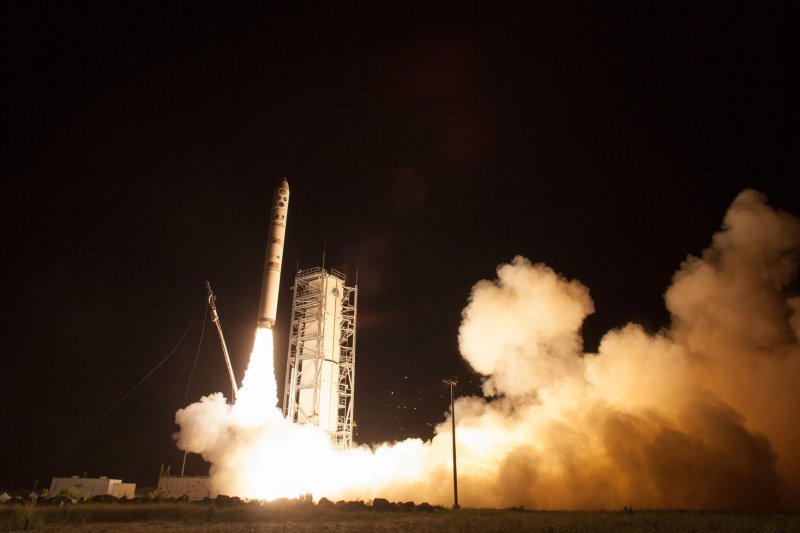NASA's Lunar Atmosphere and Dust Environment Explorer (LADEE) observatory launches aboard the Minotaur V rocket from the Mid-Atlantic Regional Spaceport (MARS) at NASA's Wallops Flight Facility, in Virginia, on Friday, Sept. 6, 2013. UPI/C. CioffI/NASA |
License Photo
MOFFETT FIELD, Calif., April 18 (UPI) -- Self-destruction, or self-sabotage, is usually regarded with disdain in society. But if you're a NASA spacecraft, self-sacrifice is called science.
Last night, NASA's lunar probe LADEE transmitted its last pieces of imagery and bid sweet goodnight to its creators, smashing into the surface of the moon. It's a sad ending, but one that was inevitable, as LADEE's low-altitude orbit was bound to become unstable.
LADEE, the Lunar Atmosphere and Dust Environment Explorer, was launched in September of last year, and in its short time orbiting the moon, it captured a plethora of new information about Earth's nearest celestial neighbor. The probe gathered detailed data on the structure and composition of the thin lunar atmosphere, and became the first spacecraft to orbit the moon over 100 times at such a low altitude. But that low orbit finally became compromised last night, and LADEE tumbled out of it -- yet another victim of gravity.
"At the time of impact, LADEE was traveling at a speed of 3,600 miles per hour -- about three times the speed of a high-powered rifle bullet," said Rick Elphic, LADEE project scientist at Ames Research Center in Moffett Field, California. "There’s nothing gentle about impact at these speeds -- it’s just a question of whether LADEE made a localized craterlet on a hillside or scattered debris across a flat area. It will be interesting to see what kind of feature LADEE has created."
Still, LADEE will be remembered for its scientific accomplishments, not its ill fate. While in orbit, the probe became the first spacecraft to rely entirely on laser-based communication, instead of radio waves. Using lasers, LADEE was able to beam back images to its command center and enable record-breaking download speeds.
Science or no science, it has to be painful any time a $280 million piece of equipment disintegrates in several hundred degree heat.
"It's bittersweet knowing we have received the final transmission from the LADEE spacecraft after spending years building it in-house at Ames, and then being in constant contact as it circled the moon for the last several months," said Butler Hine, LADEE project manager at Ames.
[NASA]
[Space.com]















